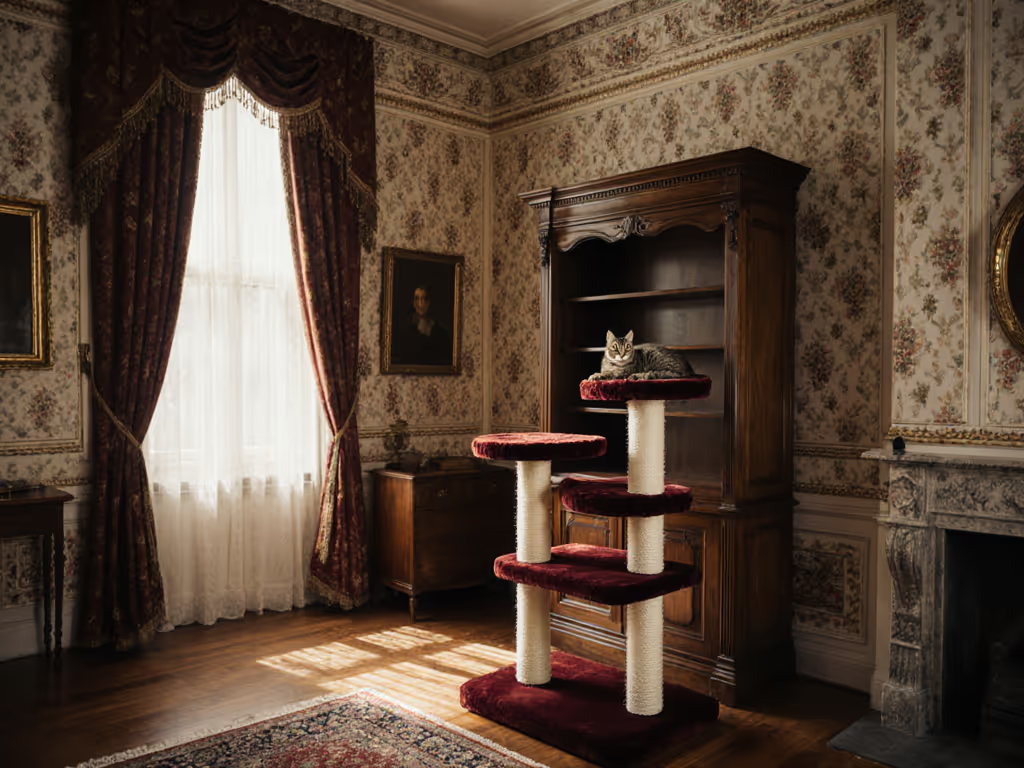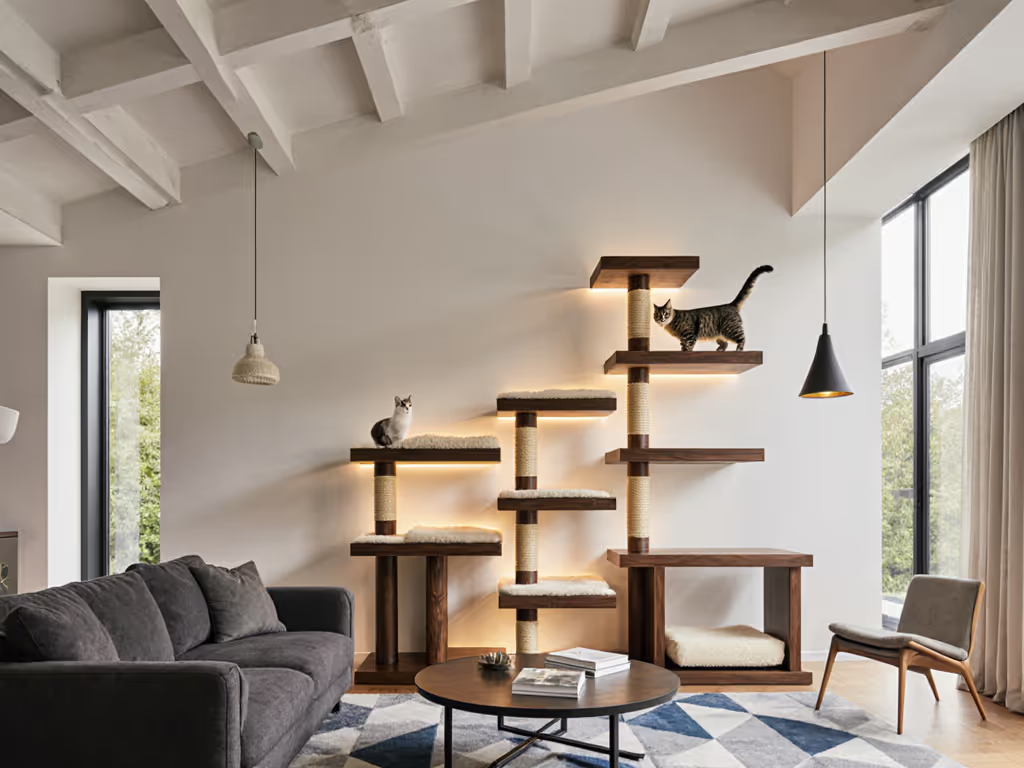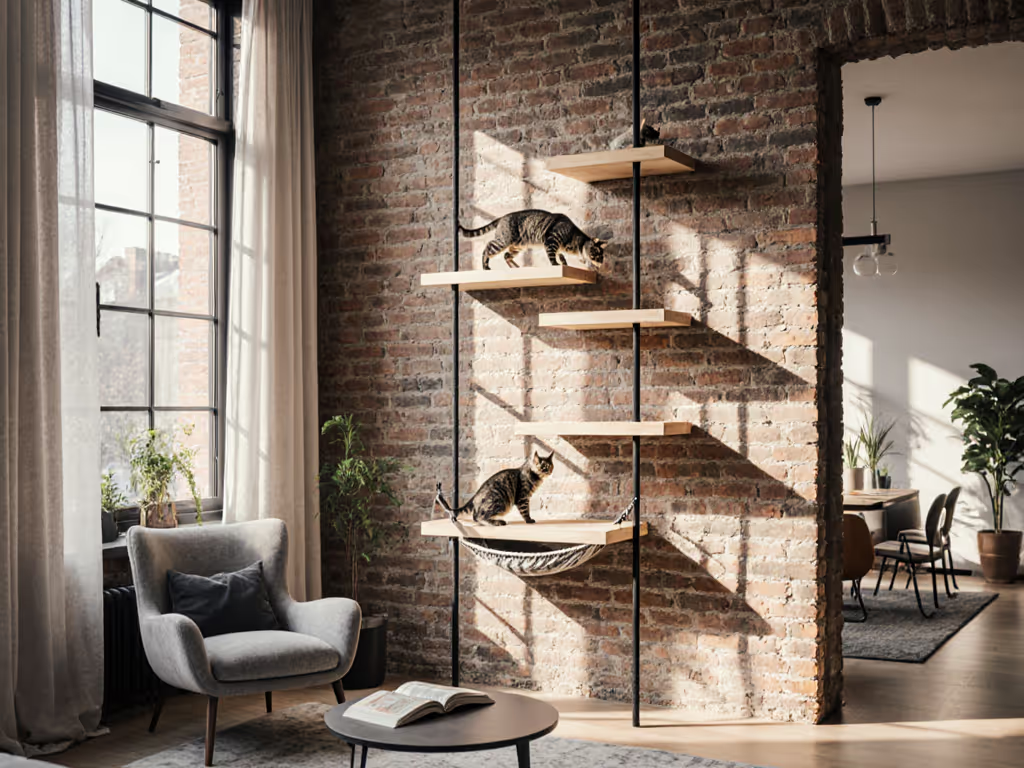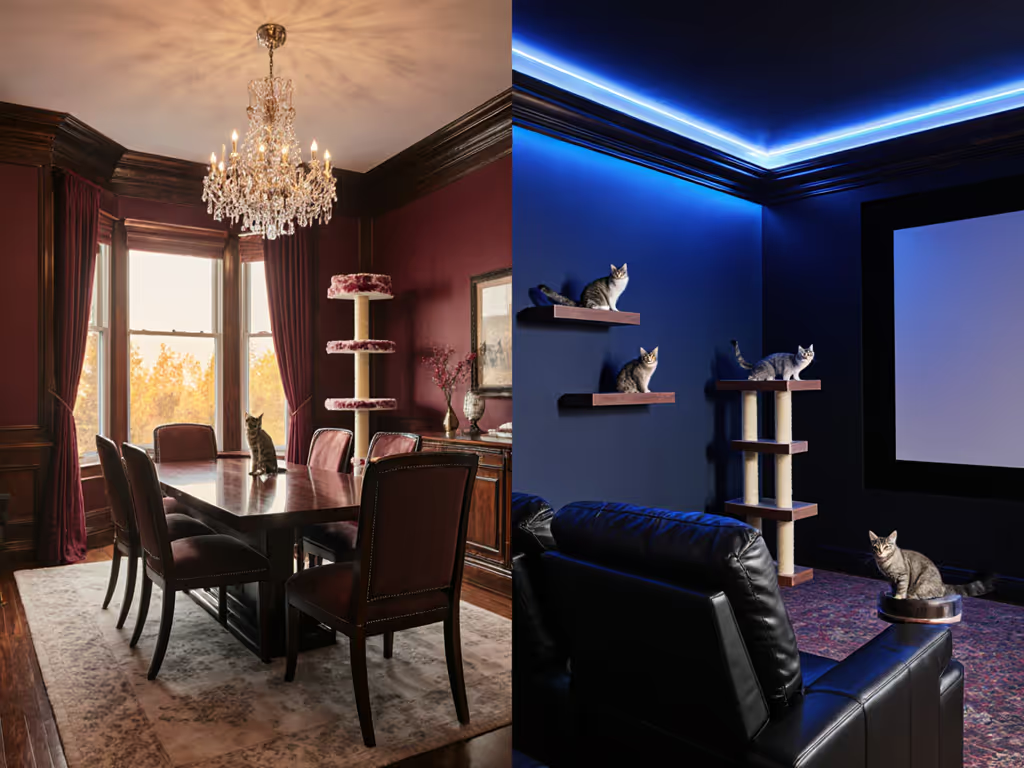
Stylish Tall Cat Furniture for Vaulted Ceiling Safety

As a cat behavior specialist who's transformed countless spaces, I've seen how tall cat furniture can either solve or create problems in homes with vaulted ceilings. Many cat guardians I work with share the same anxiety: they want to honor their cats' instinct to climb high, but worry about safety when spaces soar upward. The truth is, with precise planning, you can create vertical pathways that satisfy your cat's biological needs while keeping them safe from falls and matching your home's aesthetic. For a room-by-room checklist that balances design with feline needs, see our Catify Home guide.
Smell is a room too. When we design spaces that respect this truth, cats feel truly at home.
Why do cats need high vantage points anyway?
Cats are hardwired to seek elevated territory (not as a luxury, but as a survival mechanism). In the wild, high ground serves multiple purposes: spotting potential threats, surveying territory, and escaping danger. When your home lacks safe vertical options, your cat will improvise, sometimes with dangerous results like climbing unstable bookshelves or curtains.
I once worked with a household where their longhaired cat developed a habit of scaling the dining room curtains. Instead of punishing this natural behavior, we created a gentle vertical route along the window wall using staggered shelves. Within days, the curtain-climbing ceased not because we stopped it, but because we redirected it to a safe, appropriate channel. This approach embodies my core philosophy: behavior blossoms when spaces speak your cat's native language.
How high is too high for cat furniture?
The question isn't about absolute height but about safety context. For anchoring methods and DIY checks, use our cat furniture safety guide. Cats can safely jump down from heights of 6-7 feet if they have proper landing zones and escape routes. The risk comes not from the height itself but from:
- Unstable structures that wobble
- Smooth surfaces with no traction
- No intermediate landing spots for descent
- No retreat options if they feel exposed
For homes with vaulted ceilings, the sweet spot for platforms is creating "stepping stones" rather than single towering structures. Think of it as building a vertical highway with multiple exits, not a skyscraper with one elevator. If you're choosing between wall shelves vs cat trees for tall setups, compare pros and cons in our detailed guide. This approach supports vertical space utilization without creating anxiety.
Consider the story of a shelter cat named Miso who refused to leave his carrier for days. By mapping a vertical route with staggered shelves and a cardboard tunnel, adding scent-safe scratching posts, and feeding him on the second step, we created a pathway he could trust. On day three, he stretched, climbed, and started greeting volunteers from above. His transformation wasn't about the height, it was about having choice and predictability in his movement.

Go Pet Club 72" Cat Tree Tower
What about cats jumping from dangerous heights in homes with vaulted ceilings?
This is the most common concern I hear from guardians in homes with dramatic ceiling heights. The key isn't to eliminate height but to control access through gentle architectural planning:
- Create deliberate pathways: Instead of placing platforms randomly, arrange them in logical sequences that encourage safe movement. Your cat should never need to make a "leap of faith."
- Include multiple escape routes: If your cat feels threatened on a high platform, they need at least two ways down. This prevents panic jumps that lead to injuries.
- Establish visual anchors: Position tall furniture where your cat can see household activity but also monitor potential threats. A window cat shelf serves this dual purpose beautifully.
- Respect scent boundaries: Cats navigate primarily through smell. When placing vertical routes, consider how your cat moves through your home's scent map, not just the physical space.
I once consulted with a family whose loft apartment had an open second floor overlooking the living room below. Their cats were at serious risk of falling from the railing. We installed a series of floating shelves along the wall, creating a continuous path that kept cats safely away from the drop-off point while still allowing them vertical access. The solution was both practical and aesthetically pleasing, proving that safety and style needn't be mutually exclusive.
How can I make tall cat furniture blend with my home decor?
This is where many guardians get stuck, they want functionality without sacrificing style. The solution lies in habit-aware design choices:
- Match materials to your aesthetic: Choose platforms that complement your flooring or wall colors rather than competing with them
- Integrate with existing architecture: Follow the lines of your room rather than fighting them
- Prioritize clean lines: Look for cat furniture with minimal visual bulk
- Hide the "cat" aspect: Use plush coverings or materials that look like regular furniture
One client transformed her modern living room by installing a series of minimalist platforms that doubled as floating shelves for her decor. From across the room, you'd never know it was cat furniture, until you saw her Maine Coon lounging comfortably 7 feet off the ground, surveying his domain with clear satisfaction.
How do I encourage my cat to use tall furniture safely?
This is where sensory-focused training makes the difference between unused furniture and beloved territory:
- Scent-first introduction: Rub your cat's cheek scent on platforms before presenting them
- Food trail progression: Place treats leading upward, but never force movement
- Create positive associations: Pair new heights with pleasant experiences like brushing or quiet companionship
- Respect retreat options: Always ensure your cat can descend without passing through high-traffic areas
Remember that cats read spaces differently than we do. For step-by-step acclimation, follow our stress-free introduction guide so your cat actually uses the new height. That dramatic 10-foot-tall cat tree might look impressive to you, but to your cat, it's either a summit they can safely reach or a death trap. The difference lies in how you've created the journey upward.
Creating harmony between aesthetics and feline needs
When tall furniture is designed with both your sensibilities and your cat's instincts in mind, something remarkable happens, you stop seeing "cat furniture" and start seeing integrated living space. Your home becomes a place where your design choices honor your cat's natural behaviors rather than fighting them.
This precise approach to environmental design doesn't just protect your cat from potential falls, it addresses the root cause of many "problem" behaviors. When cats have appropriate outlets for their climbing instincts, they're less likely to target your furniture, curtains, or walls.
Smell is a room too. Your cat experiences your home in dimensions you can't perceive, design for that invisible layer, and watch confidence bloom.
Further Exploration
If you're interested in creating a vertical pathway that both satisfies your cat's needs and complements your home, consider these next steps:
- Map your cat's current movement patterns for three days before making changes
- Research how to create safe transitions between platforms (the "jump gap" should never exceed 1.5 times your cat's body length)
- Consult with a certified cat behavior consultant to develop a plan specific to your home layout
Creating a home that honors your cat's instincts while reflecting your personal style isn't just possible, it's essential for true harmony. When cats feel secure in their territory, everything else falls into place. Your next move isn't about finding the tallest furniture, but creating the most thoughtful pathway upward.



